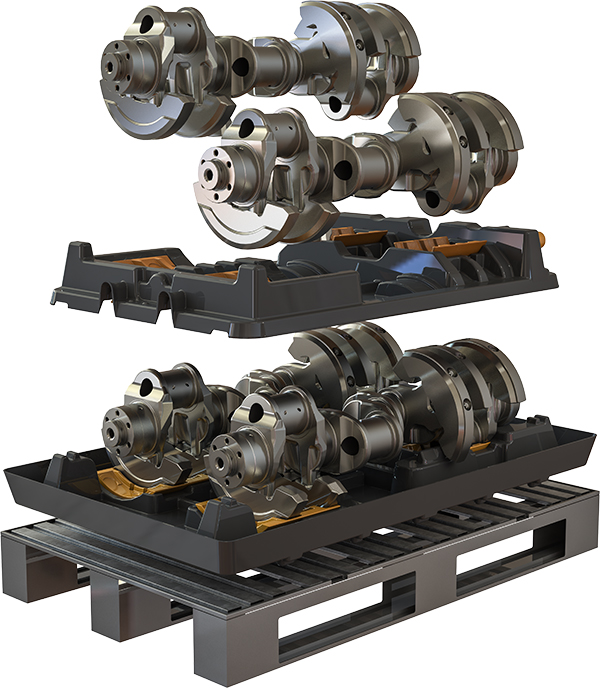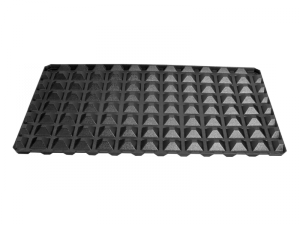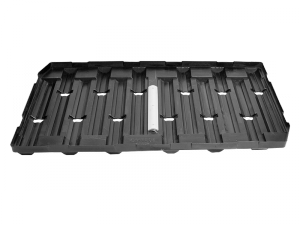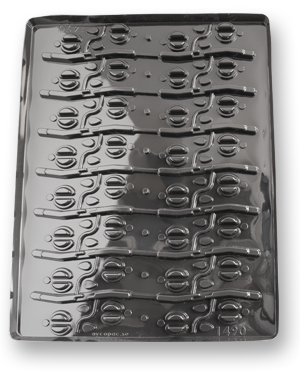Formed interlayers, trays and spacers
Nycopac designs and produces formed interlayers and trays to mainly the automotive and engineering industries, like Scania, Volvo, Autoliv and Sandvik. Also companies within the medical and food industries are our clients. We use both vacuum forming and blister technique in our productioon and the tecnique we choose depends often if the product shall be used as an returnable or disposable packaging. Using vacuum forming, the tool is realtively cheap but the production cost is higher than for blister. In blister production the tool is relatively more expensive but the cost in serial production is much lower. In some cases we use the same tool for producing disposable trays with thinner material and returnable trays with thicker material.


Blisters for inflators

Pyramid interlayers for shafts, pipes and cylinders


Nycopac produces large quantities of formed interlayers, mainly for automotive and engineering industries.
Formed interlayers are used when products have to lie safely and fixed on some form of load carrier. These kinds of interlayers are suitable when your production process is automated, and the product needs to be kept in place during transport. Collaborating with the customer, our experienced designers develop the most suitable design, production technique, and material for every project. We use different materials and production techniques depending on if you want your formed interlayer to be single-time use or multiple-time use.
Vacuumforming
This production technique is mainly used when producing large interlayers that are designed to fit on full-, half-, and quarter pallets, and where demands on stiffness and durability are high. The benefit of this production method is that the tool cost is relatively low, which enables production at lower quantities. Special attention is shown to stackability and compactability in the design process. We use sheets of PC, PP, ABS, PE or PS that are heated and put over a tool, after which air is sucked out, creating a vacuum that pulls the plastic onto the tool, shaping it around it.
Thin gauge thermoforming
In this production technique the plastic material is not in sheets, but on a roll that is fed with high speed onto the tool, where it is heated, shaped, and cut. Since the material is on a roll it has to be quite thin, <2 mm, and therefore this production technique is only suitable for interlayers with limited strength and stiffness. Currently, we can produce roll-fed interlayers up to half pallet size. We can use thin material for single-use interlayers and thicker material >1,5mm for reusable interlayers.